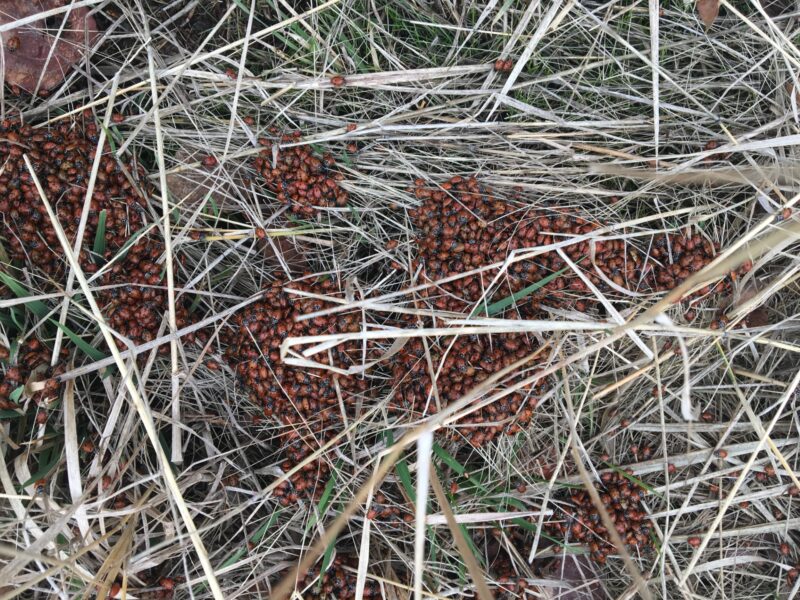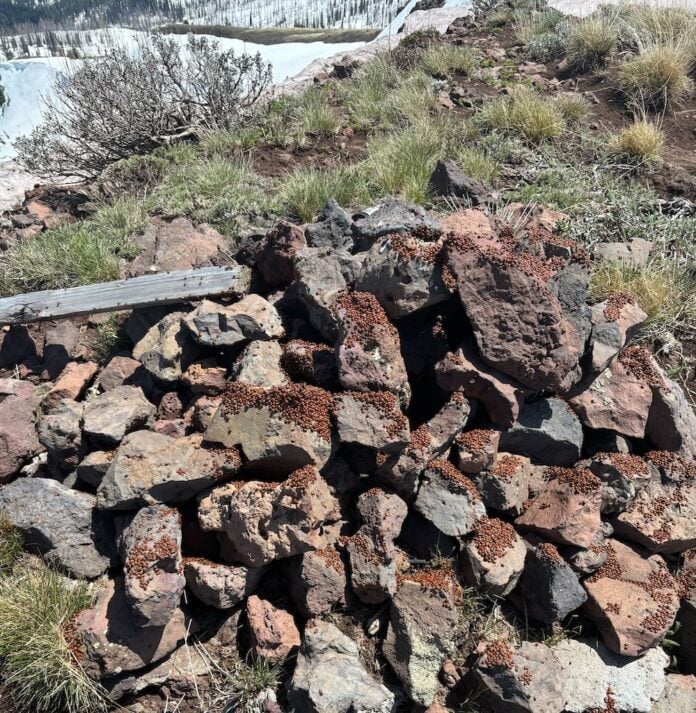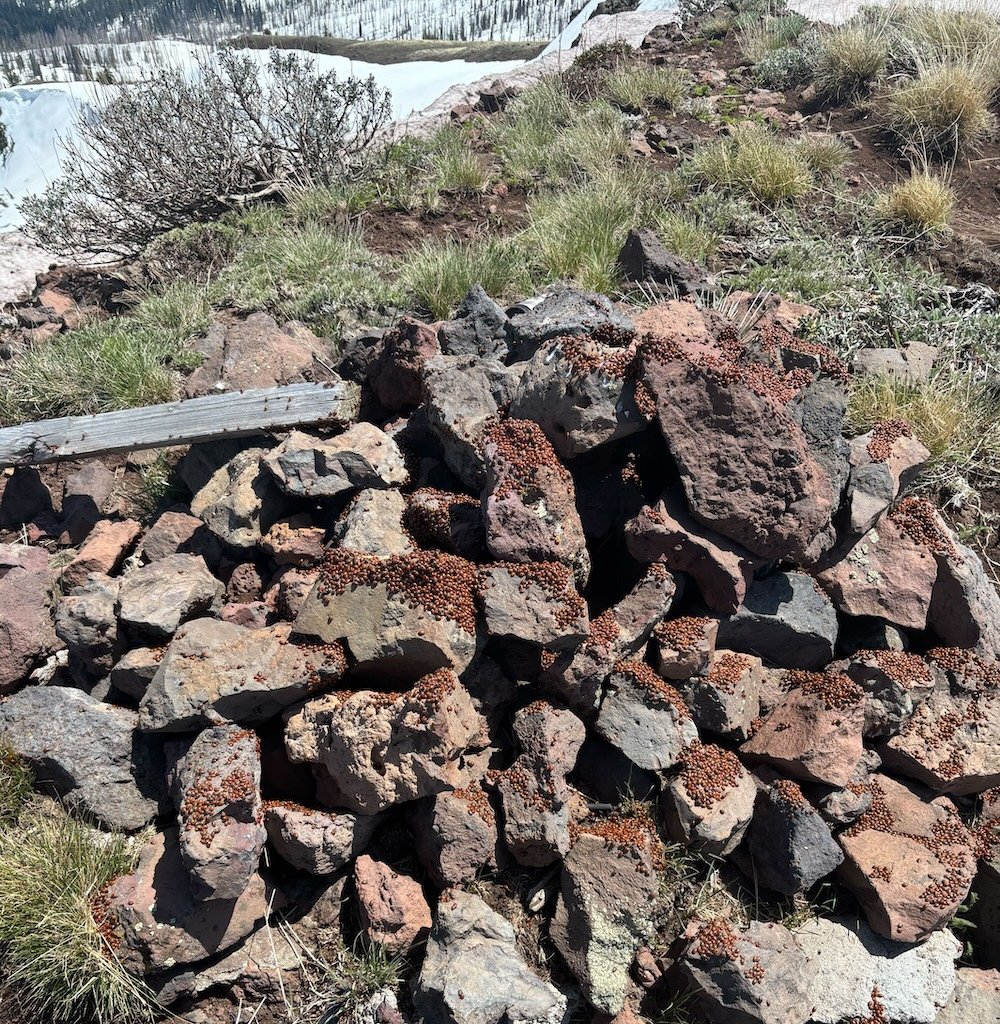Imagine going on a long hike up one of Idaho’s many tall mountains, and when you reach the summit, you see tens of thousands of ladybugs clustered on rocks.
This is what happened to Valley Lookout Editor Drew Dodson when he hiked to the top of Council Mountain in Valley County on Memorial Day Weekend. The summit is over 8,000 feet in elevation.
“At the true summit, where you would expect to see a U.S. Geological Survey cap, there was a pile of medium to small-sized rocks. In these rocks were thousands of ladybugs, piled up and crawling all over each other,” Dodson said. “Nobody in our group of three had seen anything like it before.”
Warning off predators

The phenomenon of thousands of ladybugs huddled together in high elevations is called a ladybug aggregation.
According to the University of Idaho’s Department Head and Professor of Entomology, Dr. Stephen Cook, ladybugs aggregate in massive groups to help keep predators away.
“Ladybugs (aka ladybird beetles) tend to be distasteful to predators. The red and black color on these is an aposematic coloration scheme that basically warns would-be predators not to eat them,” Dr. Cook said. “By aggregating in large groups, the color pattern is more visible (and we assume more effective) at warning off predators.”
Ladybugs tend to aggregate in higher locations during colder months in Idaho, also helping them conserve body heat and energy.
“It is my experience that the aggregations usually form in the late fall or early winter and remain through the winter,” Cook said. “When spring arrives, these beetles will disperse from the over-wintering site to surrounding areas.”
Dodson, an avid backcountry skier, wondered if the aggregations are the namesake for Ladybug Peak, the southern false summit on Jughandle Mountain near Lake Fork. The high elevation knoll is piled with rocks and boulders, similar to the pile of rocks where ladybugs were clustered atop Council Mountain.
“I am a forest entomologist, and I see aggregations like this in many forested environments,” Cook said. “They also seem to have some marker, such as bare rock or a standing tree snag that the aggregations form around.”
Cook says that this type of aggregation is common with some species of ladybugs, but that not all beetle species aggregate.






